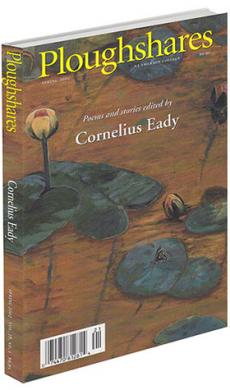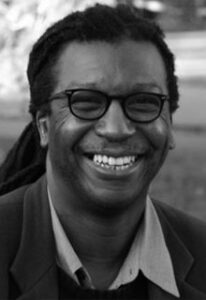Introduction: Postcard from New York
Postcard from New York
February 2002
It’s a different city now, this New York, the city my wife and I love (and choose) to live in, a new shorthand can be heard for time and location: “The Event,” “The 11th,” “The Pile.” For weeks after, on the way to rehearsals for a play of mine that was going up, I would watch people slow down and gaze into the display window at the Job-Lot on the corner of 14th Street and University Place. There was a gas mask, at discount. I wondered what they were imagining — the shape of the toxic cloud, the half-second of calm before your nose tells you this scent isn’t normal, everyday New York City funk? What were they supposing? And I wondered (and still think from time to time) what might have happened to the guy in the first tower those jets hit who called the local ABC station from his cell phone. He was up somewhere above the one-hundredth floor, above that horrible, smoking wound on the building. Everyone was fine, he wanted the rest of the city to know. Then, a few minutes later, the second plane hit the other
tower, the one with all the broadcast antennas, and he was mute, and the rest of the city, without cable or police band radio, deaf and blind.
We rarely think of our lives as historical, yet suddenly, history was sifting down, on the leaves of the ginkgoes, on the roofs and hoods of our cars, into our startled noses, impossible to block out. It was all we could talk about. At the theater, on the bare stage, morning rehearsals would begin with a long talk about what this all meant, or was going to mean. It was hard to pretend, I thought, when you’re surrounded by what you couldn’t imagine. We all had theories; we didn’t know. Like everyone else we were scared — and impatient — for what would come next. We were waiting for the new “normal” to show signs of appearing, if ever.
And within the context of the larger tragedy, Death kept up his other appointments; in my hometown of Rochester, New York, as the towers burned and fell, the second wife of one of the dearest people in my life was slowly turning into a widow, as she and her stepchildren and extended family drifted in the currents between the live television feed and her husband’s deathbed. That weekend, as we drove north on the West Side Highway, on the way upstate to the memorial service, how normal the rest of the city looked — until we pulled upon the George Washington Bridge, and looked back, south, to that gray smudge that used to catch the light. And I wondered, Did my friend die, or escape?
A few weeks later, I’m on the roof of the poet Meg Kearney’s apartment with another friend, Estha Brommer. We’re on the Lower East Side, and, looking south, at night, there are two white pillars, klieg lights for the rescue workers and construction crews, burning into the sky where the towers once stood. This is
after. Weeks of hoaxes, scares, alerts. Pox envelopes are winging their way through the postal system. We have seen the impossible: a fire that has burned for weeks (and will continue for months), a mayor, whose “tough love” attitude was about to assure that his exit from office would be as anonymous as possible, now forgiven, rehabilitated into being the right man at the right moment. It’s a beautifully clear night in any other direction but south. As I look toward the site, I think, as I often have these days, of a snippet of a song by Paul Simon:
“Anger — and no one can heal it — slides through the metal detector.”
Meg, whose office-window view points straight to the site, something I used to envy a little, is reading aloud a new poem — one of the first I’ve heard on this topic that makes sense — called “View of Downtown Manhattan from My Bedroom,” which she wrote the day after the 11th:
The amputee insists
her legs are still
down there
She feels them
burning —
She knows
When the smoke
clears they will be
standing
She’s right, I think, and tell her; that’s what it feels like. (There it isn’t, my wife once said as we both looked down 7th Avenue one Sunday afternoon, fooled again by what we weren’t seeing.)And then the three of us gazed out across the city, listening to the distant roar of traffic and airplanes, waiting for that other shoe to drop.
Since most of the writers in this issue submitted their work before last fall, you won’t find anything here that addresses the World Trade Center, but you will find, I hope, in the stories and poems gathered, true human commerce, the witnessing of what has, and will hopefully continue, to go on between us. New York and America might be a different place, but if we’re very lucky, this scary moment, with all its grief and contradictions, is being scribbled down right now by someone into our unofficial record.

